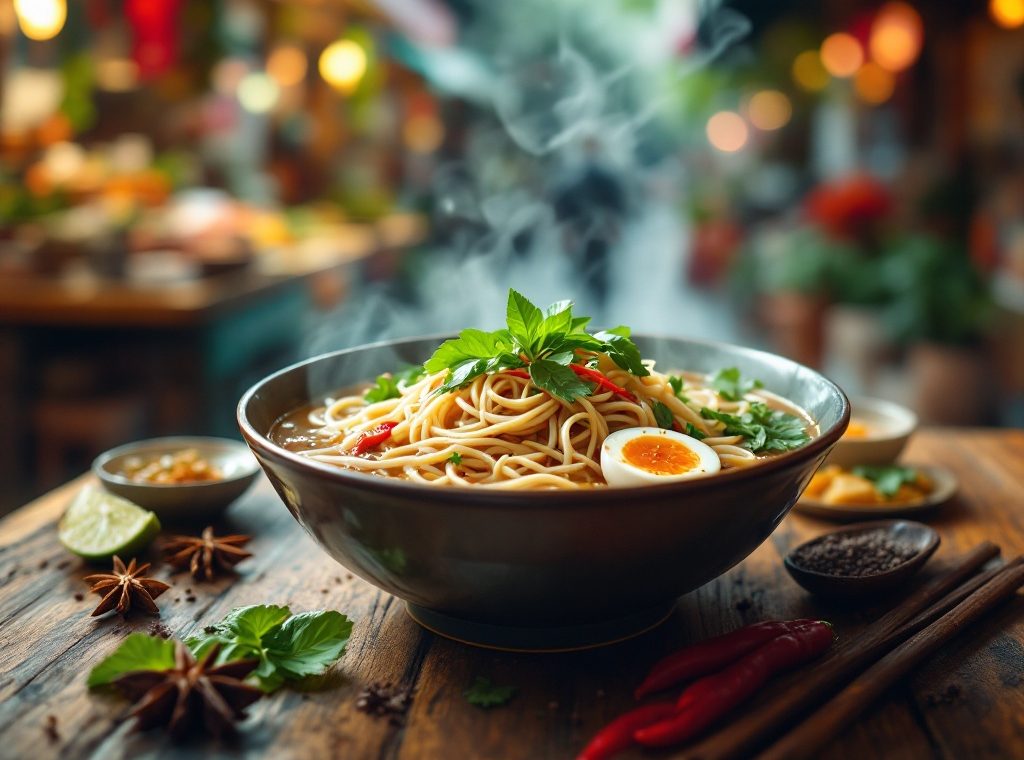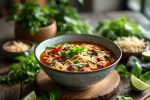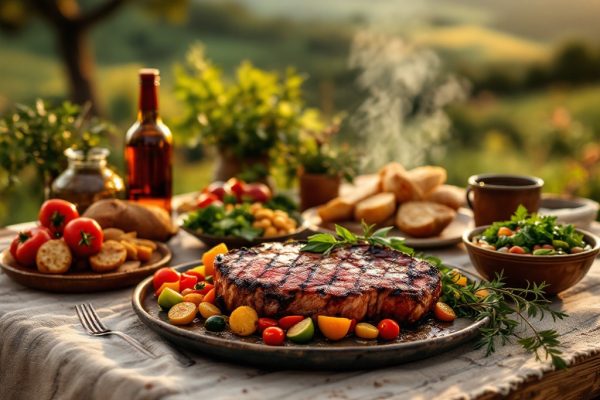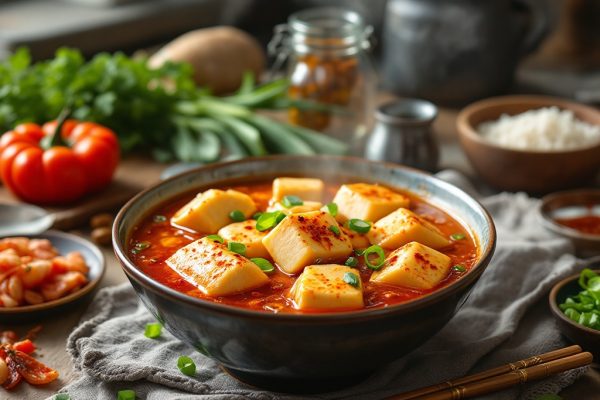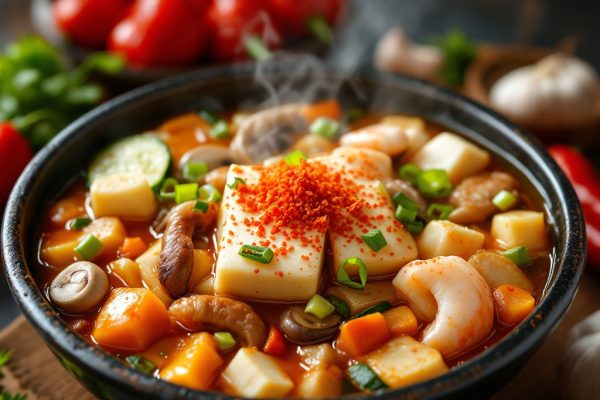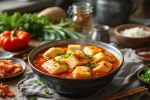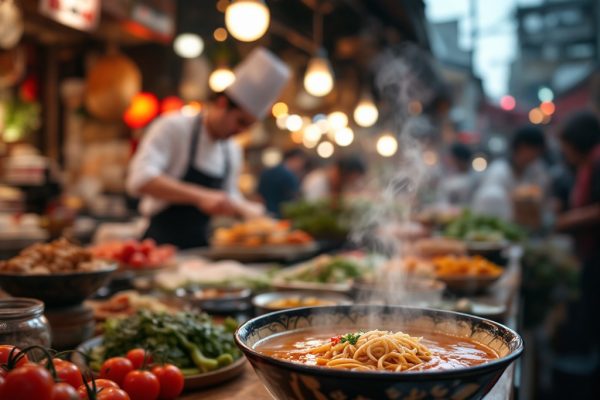Pho: Noodle Soup That’s the National Dish of Vietnam
Dive into the flavorful world of Pho, Vietnam’s iconic national dish. This aromatic soup, a blend of rich broth, flat rice noodles, and fresh herbs, offers a true taste of Vietnamese heritage. From its humble street food beginnings to its current international acclaim, discover the history, key ingredients, and regional variations of this beloved dish. Explore the art of broth-making, learn the essential spices, and uncover the perfect accompaniments to enhance your Pho experience. Ready to embark on a culinary adventure? Read on to uncover the secrets of authentic Pho and plan your Vietnamese food journey.
Important information
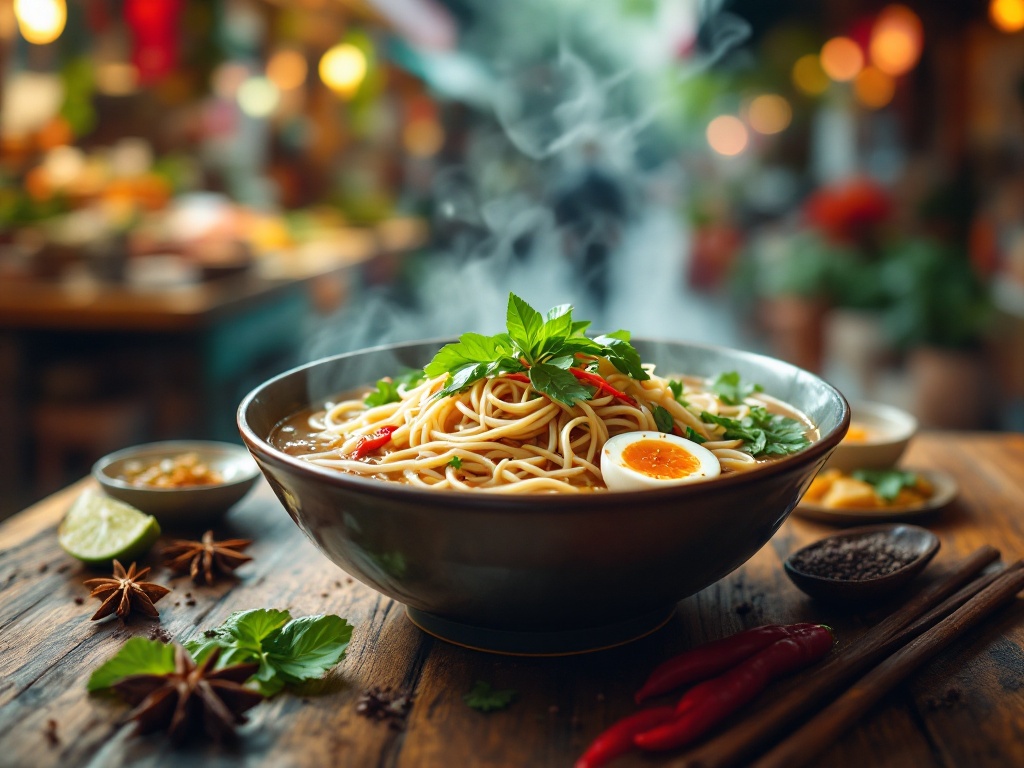
- Pho, Vietnam’s national dish, is a flavorful soup with rice noodles, herbs, and typically beef or chicken.
- Originating in northern Vietnam in the early 20th century, pho gained popularity as affordable street food.
- Key ingredients include a rich broth (often simmered with beef or chicken bones and spices like star anise, cloves, and cinnamon), flat rice noodles (bánh phở), and fresh herbs (basil, cilantro, mint).
- Regional variations exist, with Northern Pho having a clearer broth and Southern Pho a sweeter, richer broth.
- Common additions include bean sprouts, lime, chili peppers, hoisin sauce, and sriracha.
What is Pho? An Overview of Vietnam’s National Dish
Pho, Vietnam’s national dish, offers a delicious and aromatic experience. This traditional soup combines a rich broth with flat rice noodles (bánh phở) and fresh herbs like basil, mint, and cilantro. Beef (phở bò) or chicken (phở gà) are typically protein choices. Representing Vietnam’s culinary heritage and a source of national pride, pho is enjoyed throughout the country and has gained international popularity. Although often eaten for breakfast, pho is readily available at any time. For a true taste of Vietnam, trying pho is a must.
The History and Origins of Pho
Pho, a flavorful Vietnamese soup, originated in northern Vietnam in the early 1900s. Heavily influenced by French and Chinese cuisine during the colonial period, this iconic dish quickly evolved from a street food staple into a beloved meal enjoyed throughout Vietnam. Today, pho stands as a national culinary symbol.
How Pho Became a National Symbol
Pho, a cherished staple of Vietnamese cuisine, is a powerful national symbol. This iconic dish embodies the country’s rich culture and heritage, reflecting its history and regional diversity. A unifying force, pho’s flavorful broth is enjoyed by people from all walks of life.
The Role of Street Food in Pho’s Popularity
Pho’s humble beginnings as street food fueled its rise to popularity. Its affordability and convenience, readily available from countless vendors, made it a meal for everyone, regardless of social standing. This widespread accessibility fostered a sense of community and strengthened cultural traditions, ultimately transforming pho into a beloved national dish.
Key Ingredients of Pho
Aromatic spices like star anise, cloves, and cinnamon infuse the essential broth, typically simmered with beef or chicken bones. The quality of these ingredients is paramount, directly impacting the pho’s rich flavor. Another key element is bánh phở, the signature flat rice noodles. Fresh herbs like basil, cilantro, mint, and green onions provide the vibrant aroma. Toppings further enhance the experience: crunchy bean sprouts, tangy lime, and fiery chili peppers. Finally, pho is often served with meat, usually beef or chicken, creating a harmonious blend of flavors and textures.
Ingredients
- Aromatic spices: star anise, cloves, cinnamon.
- Broth: typically simmered with beef or chicken bones.
- Bánh phở: signature flat rice noodles.
- Fresh herbs: basil, cilantro, mint, green onions.
Toppings
- Crunchy bean sprouts.
- Tangy lime.
- Fiery chili peppers.
- Beef or chicken (optional).
The Essential Components: Broth, Rice Noodles, Herbs, and Meat
Pho, a vibrant Vietnamese soup, tantalizes the taste buds with its rich broth, soft noodles, and fresh herbs. The broth, simmered for hours with star anise, cloves, and cinnamon, creates a deeply aromatic base for this flavorful dish. Flat rice noodles, known as bánh phở, offer a delightfully soft texture. Basil, cilantro, and mint contribute a refreshing herbal complexity. Toppings like bean sprouts add a satisfying crunch, while lime and chili peppers provide a zesty kick. The result is a delicious and satisfying meal.
The Importance of Fresh Herbs and Toppings
Fresh herbs and toppings are essential for a truly delicious bowl of pho, bringing vibrant flavors and textures to the dish. Popular herb choices include Thai basil, cilantro, culantro (also known as sawtooth herb), and mint. Lime wedges, bean sprouts, and chili slices allow for further customization, creating a richer, more personalized pho experience.
- Thai basil,
- cilantro,
- culantro (also known as sawtooth herb),
- mint,
- lime wedges,
- bean sprouts,
- chili slices.
The Art of Pho Broth Preparation
Slow-simmered beef bones form the heart of flavorful Pho, gently releasing collagen for a rich, gelatinous broth. Charred ginger and onions add depth and complexity to the aroma and taste. A final touch of fish sauce and rock sugar balances the essential salty and sweet notes of authentic Pho.
Simmering Beef Bones for Rich Flavors
Simmering beef bones for hours creates a flavorful, rich broth, extracting collagen and giving it a full-bodied texture. Adding spices and aromatics during this slow process enhances the broth’s complexity. This extended simmering time is crucial for developing the deep flavor characteristic of pho.
The Role of Aromatics: Charred Ginger and Onions
Charring ginger and onions enhances the flavor of pho by caramelizing their sugars. This process creates a smoky depth and sweetness, contributing to the broth’s distinctive aroma and complex flavor, essential for an authentic pho experience.
Seasoning with Fish Sauce and Rock Sugar
Fish sauce creates a savory base, while rock sugar provides a touch of sweetness to balance the salt. This results in a richer, more flavorful broth.
Popular Variations of Pho
Beef Pho (Phở Bò), a popular Vietnamese soup, features various cuts of beef, such as brisket, meatballs, or rare steak. For a lighter meal, Chicken Pho (Phở Gà) offers shredded or whole chicken.
Regional variations like Phở Nam Định, Phở Sài Gòn (Saigon Pho), and Phở Bắc (Northern Pho) offer unique twists with distinct broths, toppings, and flavor profiles. Originating in Hanoi, Phở Bắc features a clear broth. In contrast, Southern Vietnam’s Phở Sài Gòn boasts a sweeter, richer broth with a more generous assortment of herbs.
Beef Pho (Phở Bò): A Favorite Choice
Beef Pho (Phở Bò) is a staple Vietnamese dish, a flavorful soup featuring a rich broth simmered with beef bones and aromatic spices. Various beef cuts, such as brisket, meatballs, or rare steak, add depth to the flavorful broth. Diners personalize their bowls with fresh herbs, lime, bean sprouts, and chili peppers for an added kick. A favorite of both locals and tourists, Pho Bo offers a comforting taste of Vietnam.
Chicken Pho (Phở Gà): A Lighter Alternative
Chicken Pho (Phở Gà) offers a delicious, lighter alternative to Beef Pho (Phở Bò). This popular Vietnamese noodle soup features chicken as its primary protein, providing a refreshing change of pace while still delivering satisfying flavor.
Exploring Regional Styles: Phở Nam Định, Phở Sài Gòn, Phở Bắc
Northern Pho
Northern Pho features a light, savory broth seasoned simply with fish sauce, black pepper, and ginger.
Southern Pho
Southern Pho offers a sweeter flavor profile thanks to the addition of rock sugar and cloves, along with a more generous array of herbs and garnishes like bean sprouts, basil, and cilantro.
Nam Dinh Pho distinguishes itself with wider rice noodles and often showcases chicken or rare beef.
Accompaniments and Serving Suggestions
Enhance your pho with fresh bean sprouts, Thai basil, and cilantro. For a distinct taste, add culantro. A squeeze of lime brightens the broth. Hoisin and sriracha add a spicy kick.
Enhance Your Pho with Fresh Bean Sprouts and Herbs
Fresh bean sprouts and herbs, like basil, cilantro, and culantro, give pho a satisfying crunch and vibrant flavor. Diners can personalize their bowl with toppings such as lime, jalapeños, and sauces, creating a uniquely flavorful experience tailored to individual tastes.
Serving Pho with Lime Juice, Hoisin Sauce, and Sriracha
Pho lovers often customize their bowls with additions like lime juice, hoisin sauce, and sriracha. These not only enrich the broth but also add a savory kick to the noodles and enhance the flavors of the meat and herbs. It’s all about creating a personalized taste experience.
Where to Experience Authentic Pho in Vietnam
Hanoi, the birthplace of Pho, is a must-visit for enthusiasts. Phở 10 Lý Quốc Sư and Phở Bát Đàn are among the city’s favorites. However, the culinary journey doesn’t end there. Ho Chi Minh City and Hue offer their own unique and delicious Pho variations. For a truly authentic experience, explore local markets and street food stalls. Coastal regions often feature seafood Pho, while mountainous areas incorporate unique local ingredients, making each bowl a distinct culinary story.

